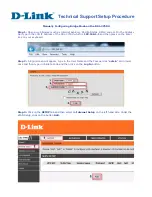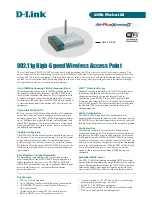
C H A P T E R
R E V I E W D R A F T # 1 — C I S C O C O N F I D E N T I A L
3-1
Cisco WRP500 Administration Guide
3
Configure Voice Services
This chapter describes how to configure your WRP500 to meet the customer’s requirements for voice
services.
•
“Analog Telephone Adapter Operations,” on page 1
•
“Manage Caller ID Service,” on page 7
•
“Silence Suppression and Comfort Noise Generation,” on page 10
•
“Configure Dial Plans,” on page 10
•
“Secure Call Implementation,” on page 18
Analog Telephone Adapter Operations
The WRP500 is equipped with a built-in Analog Telephone Adapter (ATA). An ATA is an intelligent
low-density Voice over IP (VoIP) gateway that enables carrier-class residential and business IP
Telephony services delivered over broadband or high-speed Internet connections. Users can access
Internet phone services using standard analog telephone equipment. In addition, the WRP500 has two
line ports that can be connected to the Public Switched Telephone Network (PSTN) so that your business
can support legacy phone numbers and fax numbers.
The WRP500 maintains the state of each call it terminates and makes the proper reaction to user input
events (such as on/off hook or hook flash). The WRP500 uses the Session Initiation Protocol (SIP) open
standard, so there is little or no involvement by a “middle-man” server or media gateway controller. SIP
allows interoperation with all ITSPs that support SIP.
IMAGE WILL BE SUPPLIED - based on 252075
















































